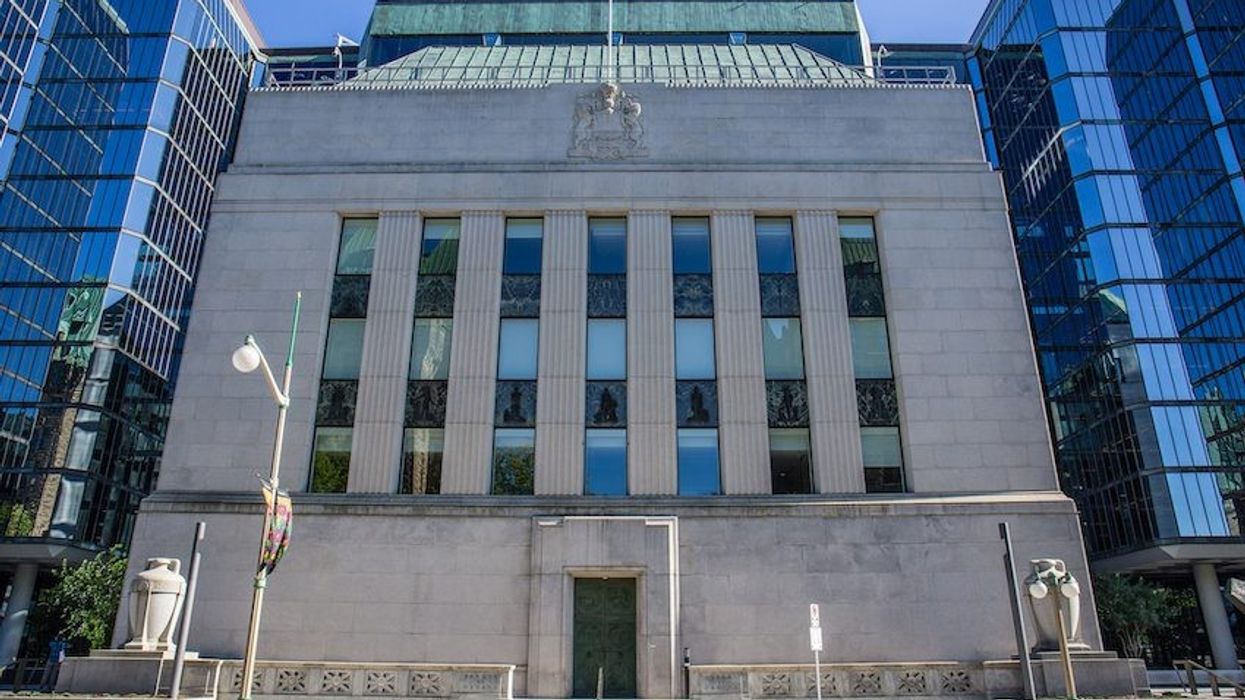One thing Canadian borrowers can count on -- interest rates are set to rise higher tomorrow, when the Bank of Canada makes its 6th monetary policy announcement of the year. The question is, just how big of a hike is in store?
Given conflicting economic cues, analysts have been split on how hawkish the central bank needs to be. Recent commentary from the Bank’s top brass that their “job is not yet done” on inflation have most economists thinking a three-quarter to full-point hike could be warranted. However, last month’s cooler inflation reading could make an argument for a tamer half-point increase.
The latest analysis from National Bank says a 0.75% hike is most conceivable, at a likelihood of 70% – but a 20% chance remains for a full-point increase.
In a note titled “Fool us once, shame on you. Fool us twice, shame on us,” National Bank Director of Economics and Strategy Taylor Schleich writes, ”The Bank of Canada surprised us in July with a full percentage-point hike as they adopted a poorly phrased ‘front-loading’ strategy. Now, we’re certainly more cognizant of the risk of a second straight 100 basis point interest rate hike and we think it’s a greater risk than is broadly appreciated.”
“Wednesday’s headline decision could go any number of ways. Guidance from July’s decision stated: “[Front-loading] argues for getting our policy rate quickly to the top end or slightly above the neutral range," Schleich writes.
“To us, 75 bps would be most consistent with what we’ve been told and the economic data we’ve taken receipt of.”
A 0.75 - 1% rate hike would bring the BoC’s policy rate from its current 2.5% to between 3.25 - 3.5% -- slightly higher than the defined neutral range. Keeping its policy rate at this elevated level will help deter inflation growth by stemming consumer spending and borrowing.
This approach would best align with the speech Bank of Canada Governor Tiff Macklem made in July, where he stated that an aggressive monetary policy approach would be warranted to get the Bank’s policy rate to its top end in a hurry, as inflation is expected to remain elevated for the long term.
Regardless of tomorrow’s hike size, writes Schleich, National expects the BoC to chill its hiking cycle, with smaller increases to come later this year.
“In any event, with September’s move bringing the policy rate north of 3%, we do expect the Bank to strike a more data dependent tone, putting the days of 75-100 bp hikes behind us.”
In a previous interview with STOREYS, BMO Chief Economist and Managing Director of Economics Doug Porter confirmed the bank’s official call is for a 0.75% hike, with a policy rate termination point of 3.5%. However, he outlines in a recent client note, there are “clear upside risks” given how the central bank took markets by surprise in July.
“After all, the entire forecasting world was also calling for a 75 bp move in July, and the BoC delivered 100 bps. On the terminal rate, there are at least three compelling reasons to believe that it may be higher than forecasters and the markets suspect,” he writes.
“First, as this space has noted a few times, to fully crack inflation, tightening cycles typically need to see short-term interest rates rise above core inflation -- and the lowest measure of core is now 5%. Second, nominal GDP and income growth broadly are on a rampage, and it’s highly debatable that rates just [raised] modestly into restrictive territory will be nearly enough to douse this fire. While almost everyone was focusing on the small downside miss in Q2 real GDP (+3.3%), nominal GDP was busily knocking the doors down with a 17.9% surge -- aside from a post-lockdown bounce, that’s the biggest rise in more than 40 years.”
In fact, he adds, the Bank could need to drive its policy rate as high as 4%, given the recent uptick in the housing market; GTA home sales rose 11% from July, indicating demand may be starting to recover.
“Any sign that the most interest-sensitive sector of the economy is holding up surprisingly well will be a clear signal that more tightening than expected may yet be required,” he writes.





















